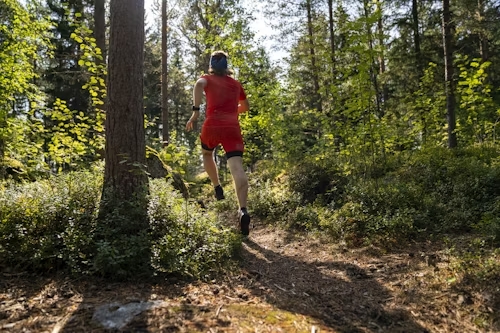Trail running is already an adventure, but technical trails take it to another level. Steep inclines, rocky paths, loose dirt, and unpredictable obstacles make these routes both challenging and exhilarating. Unlike smooth trails or dirt paths, technical terrain demands not only endurance but also skill, agility, and mental sharpness. Whether you’re aiming to improve your downhill speed, conquer tricky ascents, or handle rough terrain with confidence, this guide will help you refine your technique and take your trail running to the next level.
Understanding Technical Trail Running
Technical trails differ from regular trails because they require constant adaptation. Think of them as nature’s obstacle courses, where each step demands balance, quick decision-making, and precise foot placement. Common technical trail features include:
- Rocky paths – Loose and uneven surfaces that test stability.
- Root-covered trails – Hidden tripping hazards that require sharp focus.
- Steep ascents & descents – Intense climbs that burn the legs and fast descents that demand control.
- Water crossings & mud – Slippery conditions that require strategic foot placement.
If you want to become a strong technical trail runner, you need more than just endurance—you need skill, strength, and a fearless mindset.
Mastering the Art of Climbing Steep Trails
Uphill sections can be brutal, but with the right approach, you can conserve energy while maintaining speed and efficiency. Here’s how:
- Shorten your stride – Long, powerful strides waste energy on steep terrain. Take smaller, quicker steps to stay efficient.
- Lean slightly forward – Keep your body weight over your feet to maintain balance and prevent slipping.
- Use your arms – Pumping your arms helps generate momentum and reduces strain on your legs.
- Power hike when needed – Even elite runners hike steep sections to conserve energy. Use strong, deliberate steps and push off with your hands on your thighs.
Descending with Confidence and Control
Downhill running is where technical runners separate themselves from the pack. Many runners slow down too much out of fear, while others go too fast and lose control. Here’s how to find the right balance:
- Stay light on your feet – Avoid hard heel strikes. Keep your steps quick and light to react instantly to the terrain.
- Engage your core – A strong core stabilizes your movements and prevents you from losing balance.
- Look ahead, not down – Your eyes should scan a few steps ahead to anticipate obstacles and plan your foot placement.
- Let gravity help – Instead of resisting gravity, lean slightly forward and use it to maintain smooth momentum.
Practicing downhill running on different terrains will build confidence and improve reaction time.
Strength and Agility Training for Technical Trails
Being a great technical trail runner isn’t just about running—it’s about building the strength and agility needed to react quickly and stay injury-free. Focus on:
- Single-leg exercises – Improve stability with lunges, step-ups, and single-leg squats.
- Core workouts – Planks, Russian twists, and hanging leg raises build the strength needed for balance and control.
- Plyometrics – Box jumps and lateral bounds train explosive power for quick movements on uneven terrain.
- Ankle and foot strength – Balance drills, barefoot exercises, and resistance band work improve control on tricky surfaces.
Mental Focus: The Secret Weapon of Technical Running
Technical trails require intense concentration. A split-second lapse in focus can lead to missteps or falls. Train your mind with these techniques:
- Stay present – Focus on the next few steps instead of worrying about the entire route.
- Visualize your run – Before a tough section, picture yourself moving smoothly over obstacles.
- Controlled breathing – Steady breathing keeps you relaxed and focused, especially on challenging descents.
Final Thoughts
Mastering technical trail running takes time, but with consistent practice, smart training, and a fearless attitude, you can turn even the toughest terrain into your playground. Embrace the challenge, refine your skills, and enjoy the thrill of navigating nature’s toughest paths with confidence.
So, lace up your trail shoes, find the most rugged trail you can, and start pushing your limits—because technical trails aren’t just about running; they’re about mastering the art of movement in the wild.

